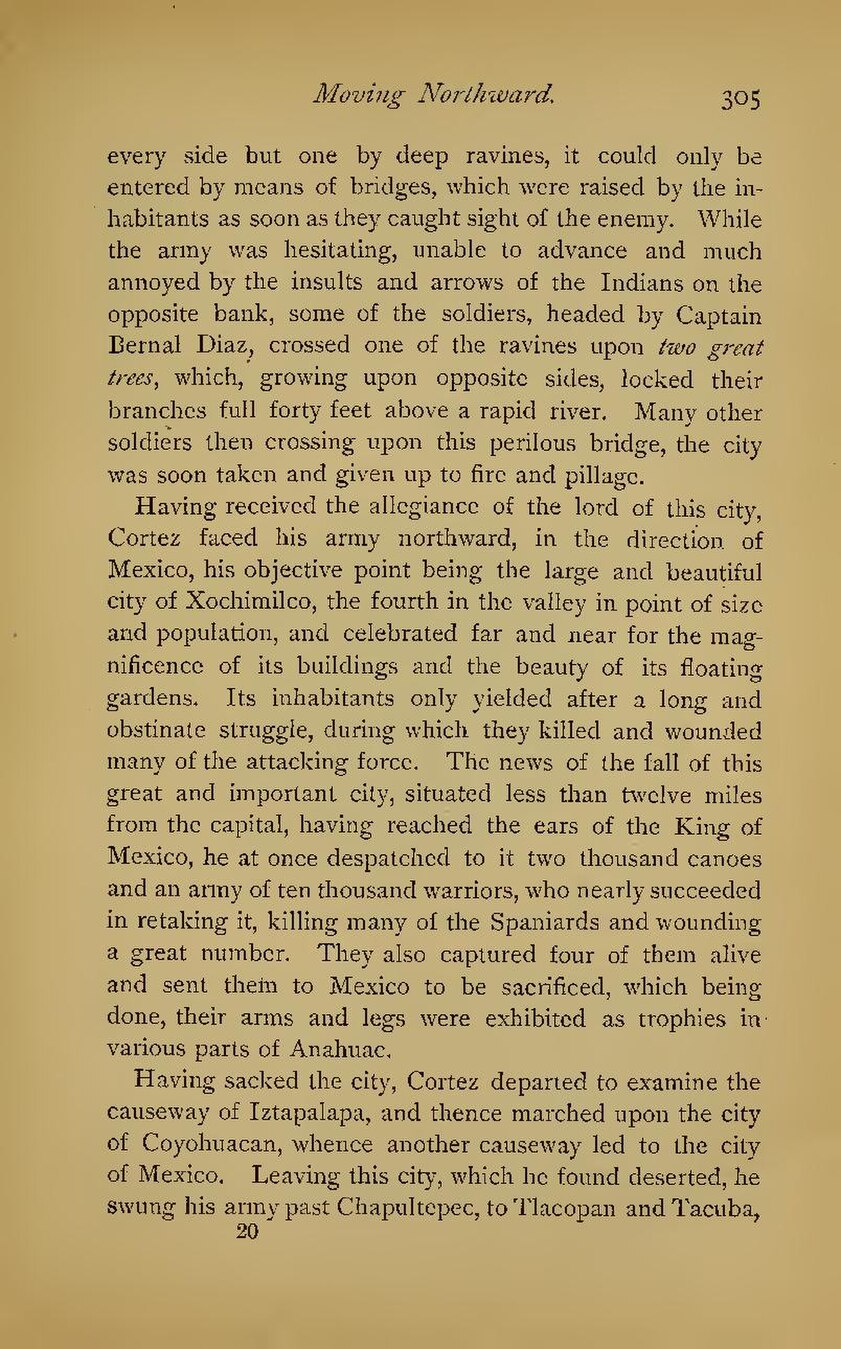every side but one by deep ravines, it could only be entered by means of bridges, which were raised by the inhabitants as soon as they caught sight of the enemy. While the army was hesitating, unable to advance and much annoyed by the insults and arrows of the Indians on the opposite bank, some of the soldiers, headed by Captain Bernal Diaz, crossed one of the ravines upon two great trees, which, growing upon opposite sides, locked their branches full forty feet above a rapid river. Many other soldiers then crossing upon this perilous bridge, the city was soon taken and given up to fire and pillage.
Having received the allegiance of the lord of this city, Cortez faced his army northward, in the direction of Mexico, his objective point being the large and beautiful city of Xochimilco, the fourth in the valley in point of size and population, and celebrated far and near for the magnificence of its buildings and the beauty of its floating gardens. Its inhabitants only yielded after a long and obstinate struggle, during which they killed and wounded many of the attacking force. The news of the fall of this great and important city, situated less than twelve miles from the capital, having reached the ears of the King of Mexico, he at once despatched to it two thousand canoes and an army of ten thousand warriors, who nearly succeeded in retaking it, killing many of the Spaniards and wounding a great number. They also captured four of them alive and sent them to Mexico to be sacrificed, which being done, their arms and legs were exhibited as trophies in various parts of Anahuac.
Having sacked the city, Cortez departed to examine the causeway of Iztapalapa, and thence marched upon the city of Coyohuacan, whence another causeway led to the city of Mexico. Leaving this city, which he found deserted, he swung his army past Chapultepec, to Tlacopan and Tacuba,
